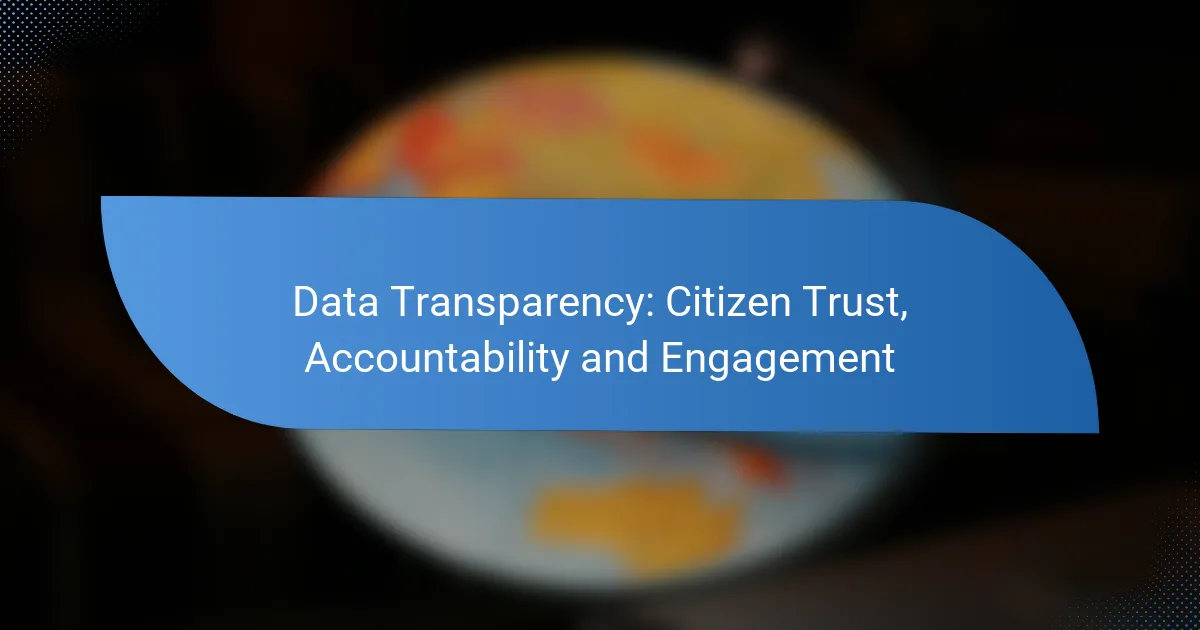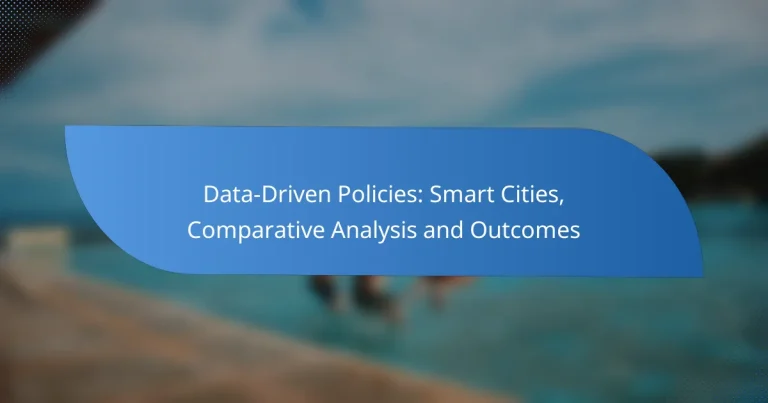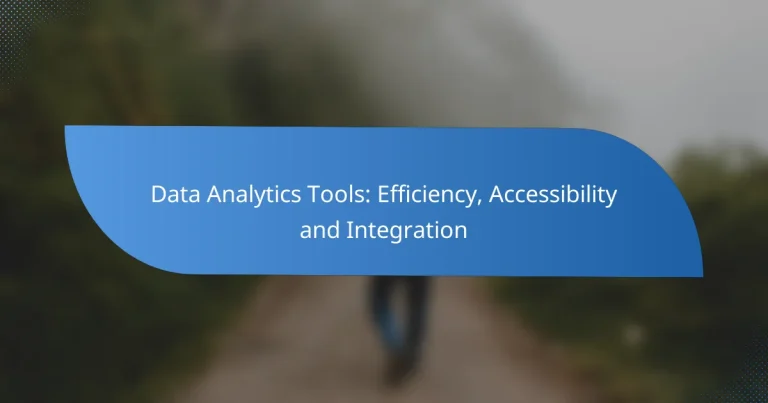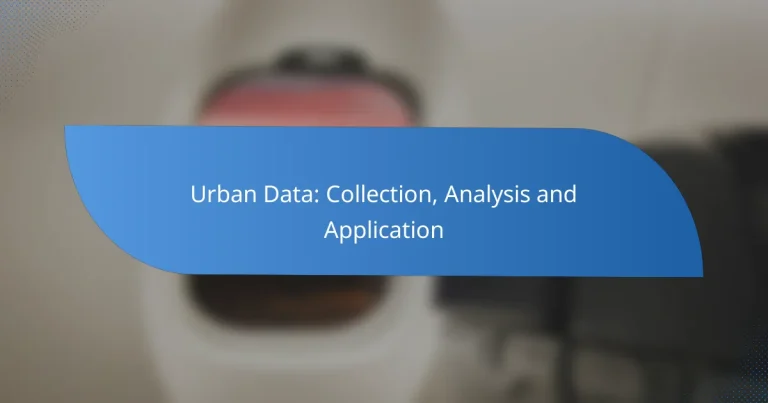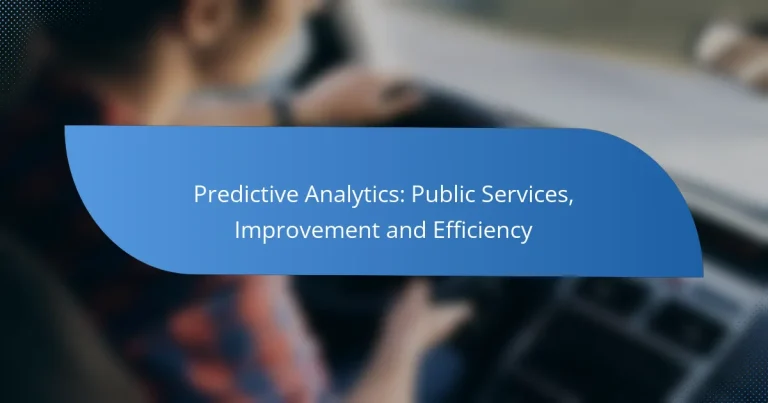Data Transparency: Citizen Trust, Accountability and Engagement
Data transparency is essential for fostering citizen trust in government by ensuring clear access to information about actions and decisions. By implementing strategies such as open data initiatives and user-friendly dashboards, governments can enhance accountability and engage citizens more effectively. When individuals understand how data is collected and utilized, their confidence in public institutions is significantly strengthened.
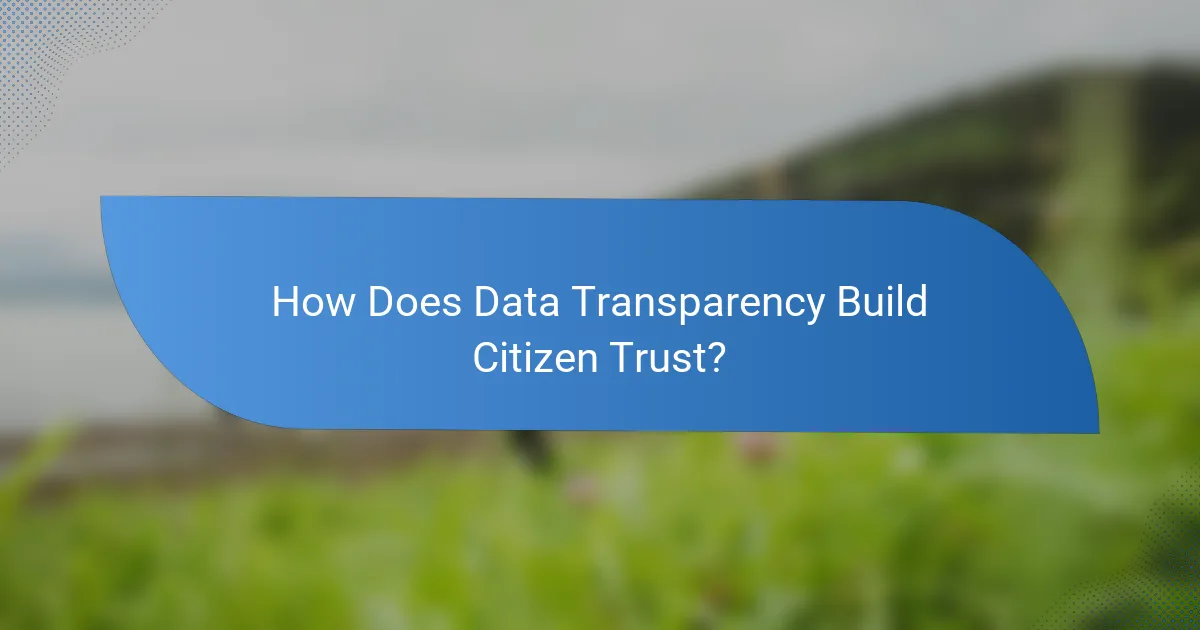
How Does Data Transparency Build Citizen Trust?
Data transparency fosters citizen trust by providing clear access to information regarding government actions and decisions. When citizens can see how data is collected, used, and shared, they are more likely to feel confident in the integrity of their institutions.
Enhances accountability
Data transparency enhances accountability by allowing citizens to monitor government performance and decision-making processes. When data is openly available, it becomes easier to hold public officials responsible for their actions and policies.
For example, when local governments publish budgets and spending reports, citizens can track how public funds are allocated and spent. This visibility can deter misuse of resources and encourage ethical behavior among officials.
Promotes informed decision-making
Transparency in data empowers citizens to make informed decisions based on accurate information. When data about public services, health, and safety is readily accessible, individuals can better understand the implications of policies and initiatives.
For instance, access to environmental data allows communities to assess air and water quality, enabling them to advocate for necessary changes. This informed engagement leads to more effective public discourse and policy outcomes.
Encourages public participation
Data transparency encourages public participation by inviting citizens to engage with data and contribute to discussions. When people have access to relevant information, they are more likely to participate in civic activities, such as town hall meetings or public consultations.
Local governments can facilitate this by providing user-friendly platforms for data access and encouraging feedback. This not only strengthens community ties but also ensures that diverse perspectives are considered in decision-making processes.
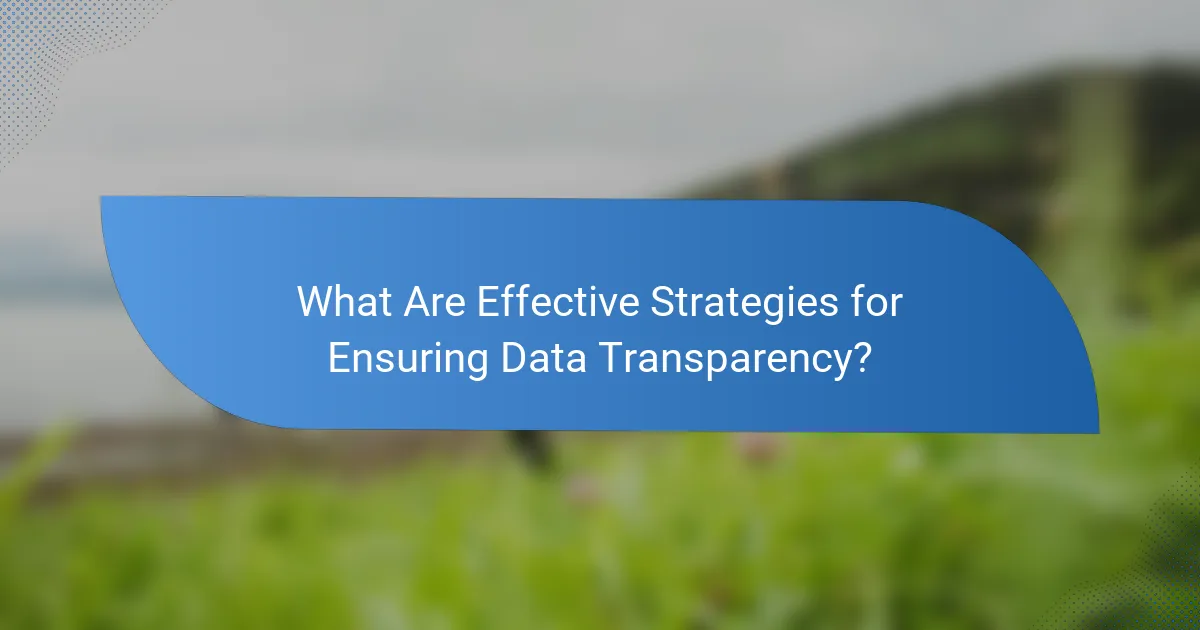
What Are Effective Strategies for Ensuring Data Transparency?
Effective strategies for ensuring data transparency include implementing open data initiatives, utilizing blockchain technology, and creating user-friendly data dashboards. These approaches enhance citizen trust, accountability, and engagement by making information accessible and understandable.
Implementing open data initiatives
Open data initiatives involve making government and organizational data freely available to the public. This can include datasets related to public spending, health statistics, and environmental data, which can be accessed online without restrictions. By providing this information, organizations can foster trust and encourage citizen participation.
To implement an effective open data initiative, consider establishing clear data governance policies, ensuring data quality, and promoting awareness through outreach programs. Engaging with community stakeholders can also help identify the most relevant data to share.
Utilizing blockchain technology
Blockchain technology offers a secure and transparent way to manage data, ensuring that information is immutable and easily verifiable. By using blockchain, organizations can provide a clear audit trail for transactions, which enhances accountability and reduces the risk of data manipulation.
When adopting blockchain, organizations should evaluate the costs and technical requirements involved. It is essential to ensure that the chosen blockchain solution aligns with the specific needs of the organization and its stakeholders, while also considering regulatory compliance.
Creating user-friendly data dashboards
User-friendly data dashboards present complex data in an accessible format, allowing users to easily interpret and interact with the information. These dashboards can visualize trends, comparisons, and key performance indicators, making data more engaging for citizens.
To create effective dashboards, focus on simplicity and clarity. Use intuitive design principles, employ interactive elements, and ensure that the dashboard is mobile-friendly. Regularly updating the data and gathering user feedback can help maintain relevance and usability.
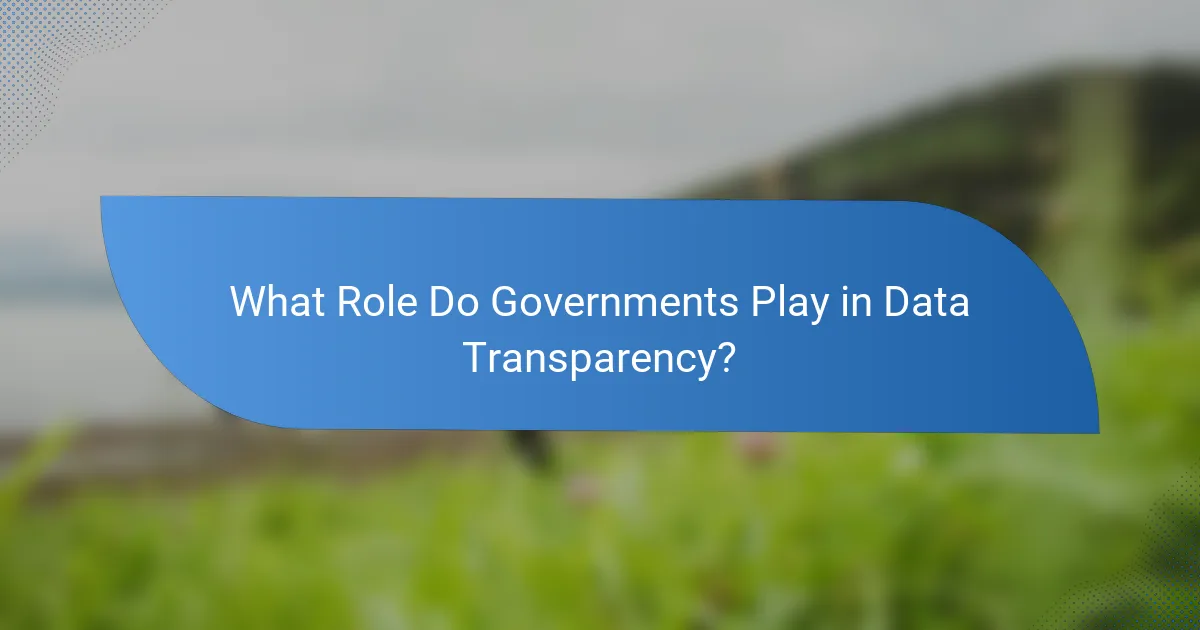
What Role Do Governments Play in Data Transparency?
Governments play a crucial role in promoting data transparency by establishing regulations, ensuring public access to information, and fostering partnerships with civic technology organizations. Their actions directly influence citizen trust and accountability in public institutions.
Establishing regulatory frameworks
Regulatory frameworks set the standards for data transparency, outlining what information must be disclosed and how it should be managed. Governments can implement laws that require public agencies to publish data regularly, ensuring that citizens have access to relevant information.
For example, the Freedom of Information Act in the United States mandates that federal agencies make their records available to the public, which enhances accountability. Countries in the European Union follow the General Data Protection Regulation (GDPR), which also emphasizes transparency in data handling.
Facilitating public access to information
Facilitating public access involves creating platforms where citizens can easily find and understand government data. Online portals and open data initiatives allow users to access datasets on various topics, from public spending to environmental statistics.
Governments should ensure these platforms are user-friendly and provide clear guidance on how to interpret the data. Regular updates and community engagement can help maintain interest and trust in these resources.
Encouraging civic tech partnerships
Civic tech partnerships involve collaboration between governments and technology organizations to enhance data transparency. By leveraging innovative tools and platforms, these partnerships can improve the dissemination and usability of public data.
For instance, governments can work with civic tech startups to develop applications that visualize data for easier comprehension. This collaboration not only increases transparency but also encourages civic engagement, as citizens can interact with the data in meaningful ways.
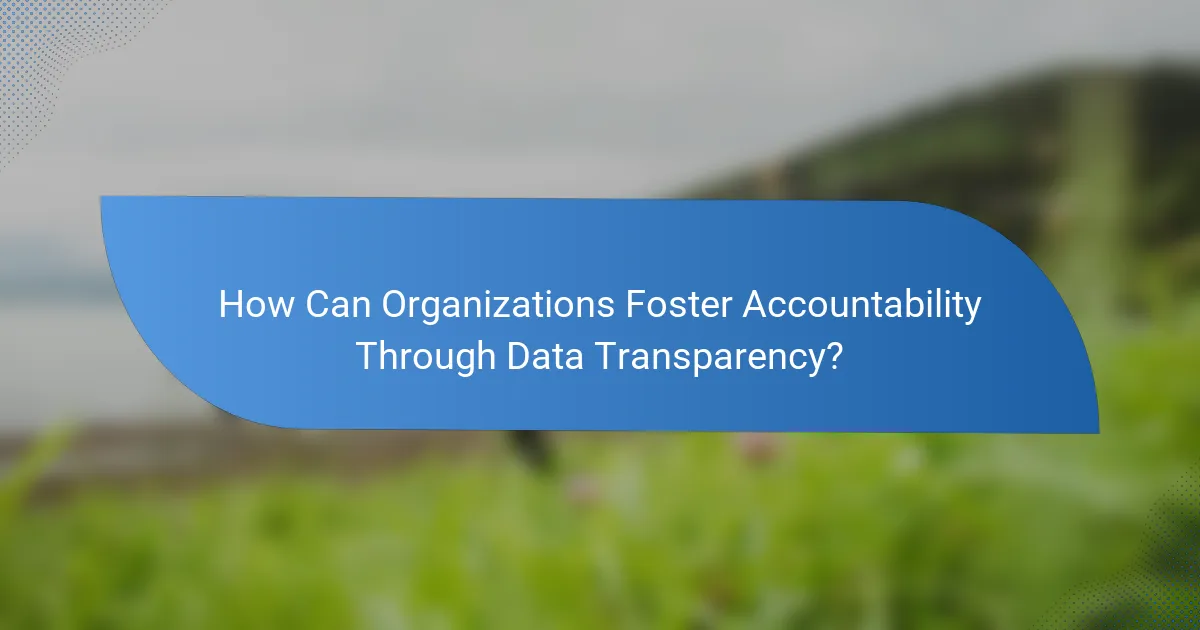
How Can Organizations Foster Accountability Through Data Transparency?
Organizations can foster accountability through data transparency by openly sharing information about their data practices and decision-making processes. This openness builds trust with stakeholders and encourages responsible behavior within the organization.
Regular reporting and audits
Regular reporting and audits are essential for maintaining accountability in data practices. Organizations should establish a routine schedule for publishing reports that detail data usage, privacy measures, and compliance with relevant regulations. These reports should be accessible to the public to enhance transparency.
Audits, whether internal or conducted by external parties, provide an additional layer of scrutiny. They help identify areas for improvement and ensure that data practices align with stated policies. Organizations should aim for audits at least annually, but more frequent checks may be beneficial for high-stakes data environments.
Engaging stakeholders in data practices
Engaging stakeholders in data practices is crucial for fostering a culture of accountability. Organizations should actively involve community members, employees, and other stakeholders in discussions about data collection and usage. This can be achieved through workshops, surveys, or advisory committees.
By soliciting input from stakeholders, organizations can better understand public concerns and expectations. This engagement not only builds trust but also helps organizations tailor their data practices to meet the needs of those they serve.
Utilizing third-party assessments
Utilizing third-party assessments can enhance credibility and accountability in data transparency. Independent evaluations by reputable organizations can provide an unbiased perspective on data practices and compliance with standards. This can reassure stakeholders that the organization is committed to ethical data management.
Organizations should seek assessments from recognized bodies that specialize in data privacy and transparency. Regular third-party evaluations can help identify gaps and provide actionable recommendations, further strengthening the organization’s accountability framework.
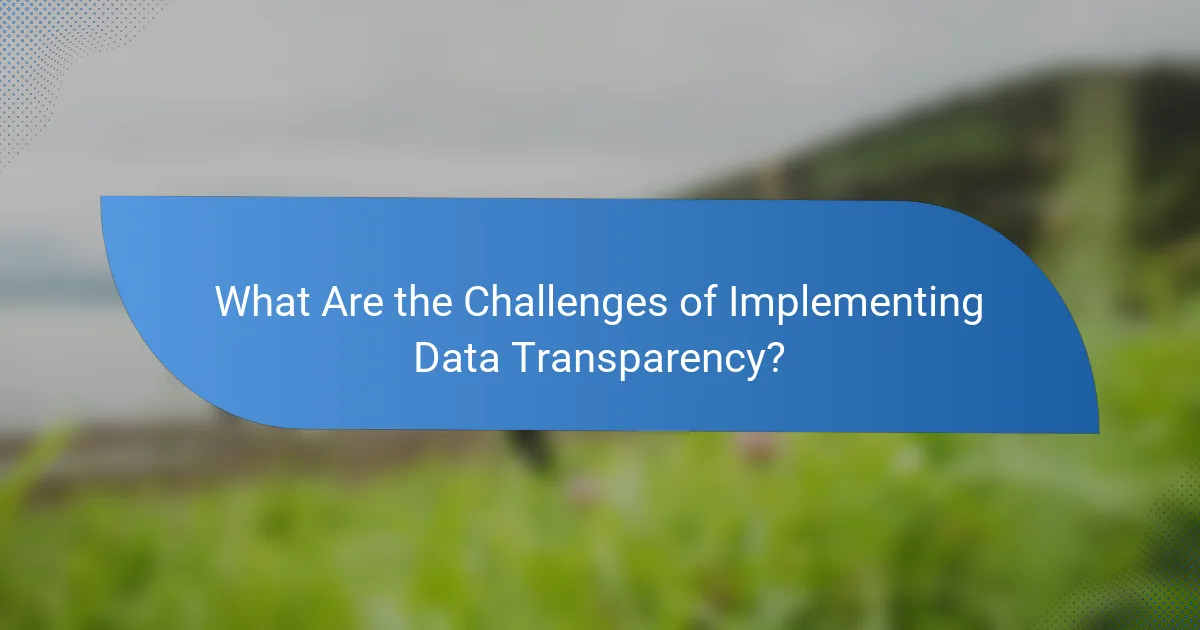
What Are the Challenges of Implementing Data Transparency?
Implementing data transparency faces several challenges that can hinder its effectiveness. Key issues include data privacy concerns, resource limitations, and public skepticism, all of which must be addressed to foster trust and engagement.
Data privacy concerns
Data privacy concerns are a significant barrier to achieving transparency. Citizens often worry about how their personal information will be used and whether it will be adequately protected from misuse. Organizations must navigate regulations like GDPR in Europe or CCPA in California, which impose strict guidelines on data handling.
To address these concerns, organizations should prioritize data anonymization and encryption techniques. Clear communication about data usage and robust privacy policies can help alleviate fears and build trust among the public.
Resource limitations
Resource limitations can impede the implementation of effective data transparency initiatives. Many organizations may lack the necessary financial, technical, or human resources to collect, manage, and disseminate data transparently. This is particularly true for smaller entities or those in developing regions.
To overcome these limitations, organizations can seek partnerships with tech companies or non-profits that specialize in data management. Additionally, leveraging open-source tools can reduce costs while enhancing transparency efforts.
Public skepticism
Public skepticism is another challenge that can undermine data transparency initiatives. Many citizens may doubt the authenticity of the data provided or question the motives behind transparency efforts. This skepticism can stem from past experiences with misinformation or perceived government or corporate secrecy.
To combat skepticism, organizations should engage the public through open forums and feedback mechanisms. Demonstrating a commitment to accountability and consistently updating stakeholders on data practices can help build credibility and trust over time.
